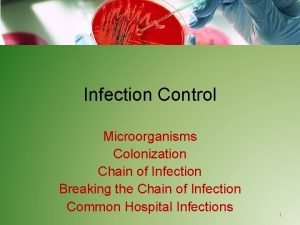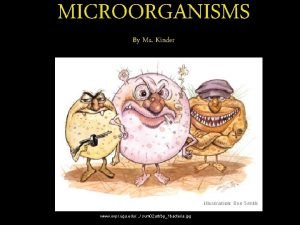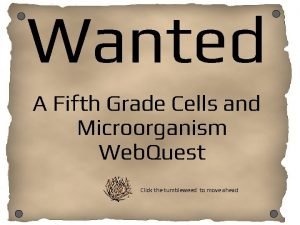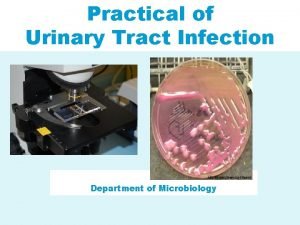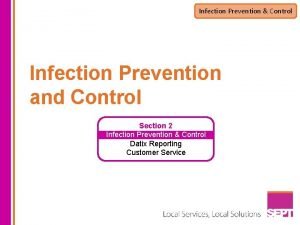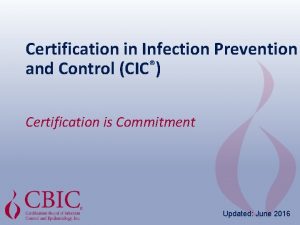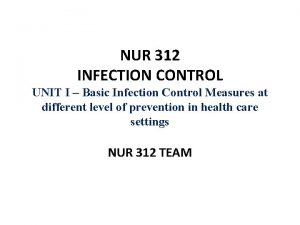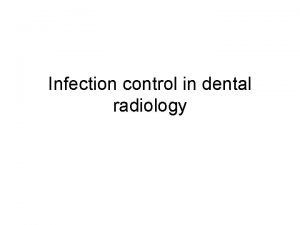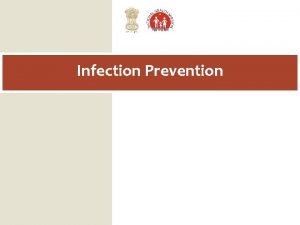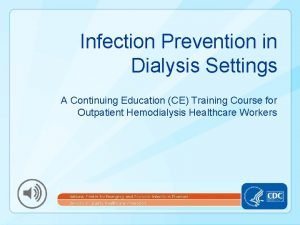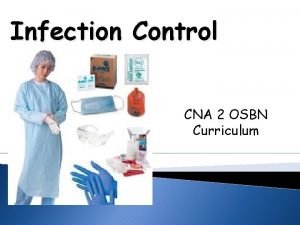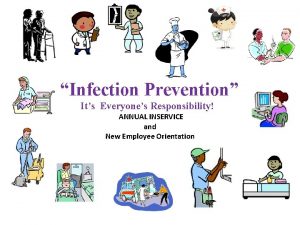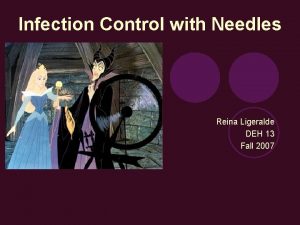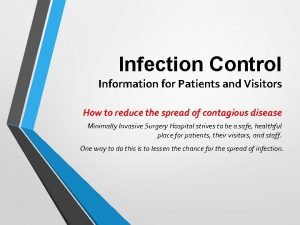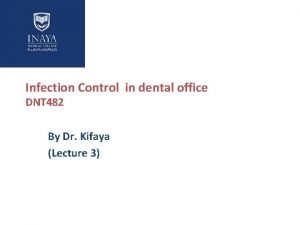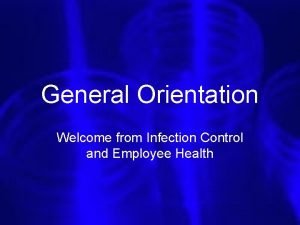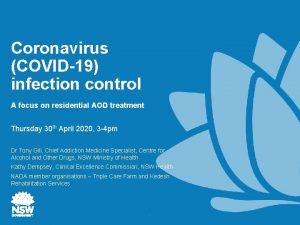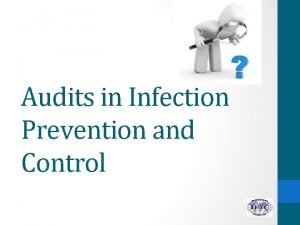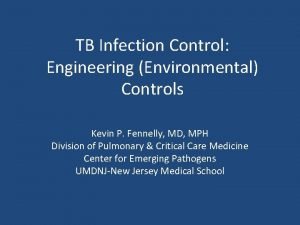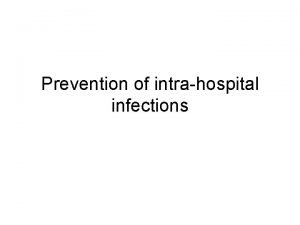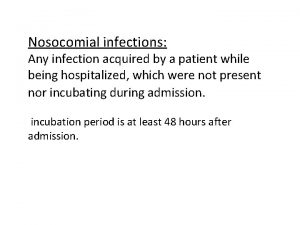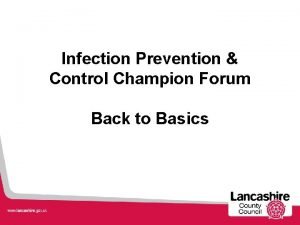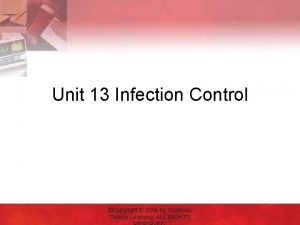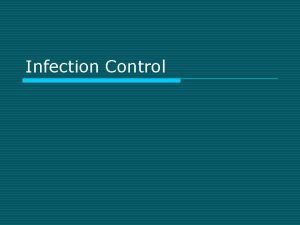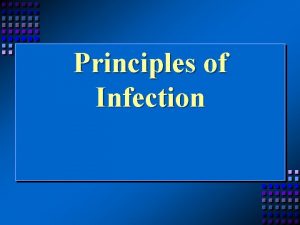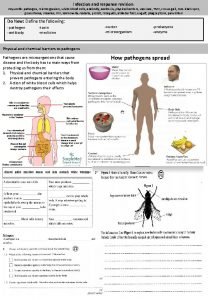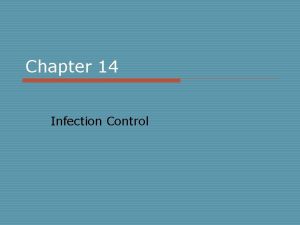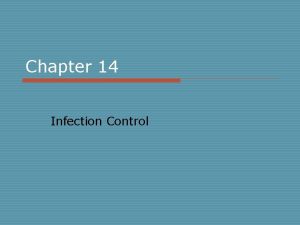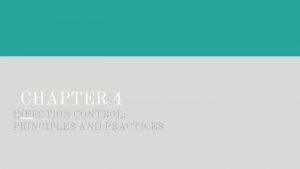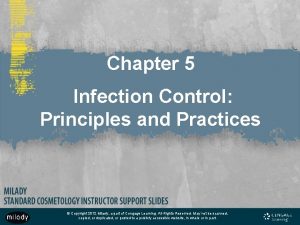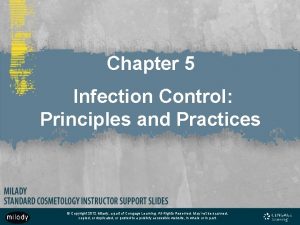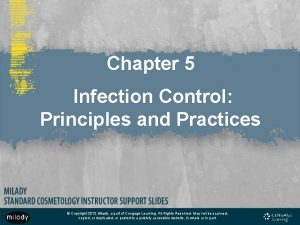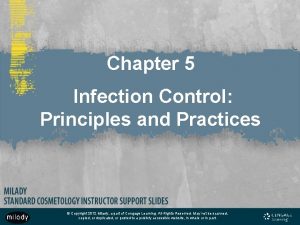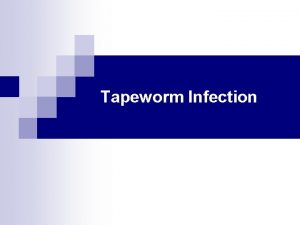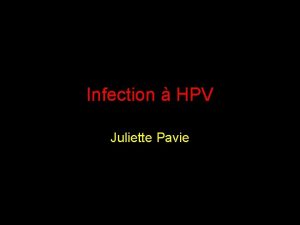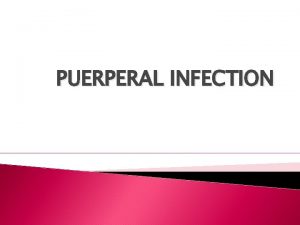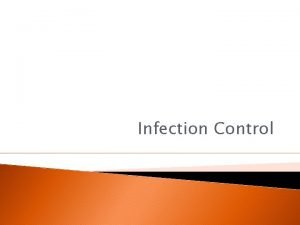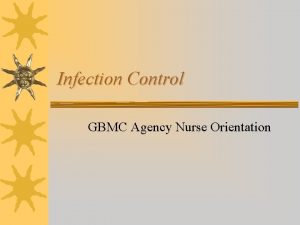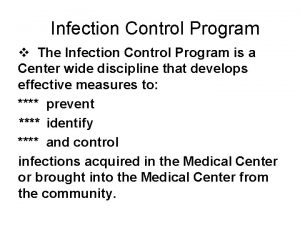Infection Control Practices Principles of Infection Control Microorganism

































- Slides: 33

Infection Control Practices

Principles of Infection Control • Microorganism: A small living organism that is not visible to the naked eye. • Pathogen (Germs): Disease causing organism • Non-pathogen: Non-disease causing organism

How Diseases Spread • Most pathogens prefer a warm, dark, moist environment • Need for oxygen varies • Aerobic (requires O 2) • Anaerobic (Does not require O 2) • Human body is an ideal supplier

Microorganism Classifications 4

1. Viruses • • Smallest microorganisms Spread by blood and body secretions Very difficult to kill Cause many diseases 5

2. Rickettsiae • Parasitic microorganisms • Transmitted to humans by the bites of insects (e. g. , fleas, lice, ticks, mites) 6

3. Fungi • • Simple, plant-like organisms Live on dead organic matter EX: Yeast and mold Antibiotics do not kill 7

4. Protozoa • One-celled, animal-like organism • Found in decayed materials and contaminated water • May have flagella for movement 8

5. Bacteria • Simple, one-celled organisms • Multiply rapidly • Classified by shape and arrangement • Cocci: round • Bacilli: rod-shaped • Spirilla: spiral/twisted 9

Antibiotics • Antibiotics are used to kill bacteria • Antibiotic-resistant: the antibiotic is no longer effective against the bacteria 10

Chain of Infection Diagram

The Chain of Infection Infectious Agent Pathogen must be present Examples: bacteria or viruses

The Chain of Infection Infectious Agent Where pathogen can live Examples: human body, animals, the environment Reservoir Host

The Chain of Infection Infectious Agent Reservoir Host Portal of Exit Way for pathogen to escape from the reservoir Examples: bodily fluids

The Chain of Infection Infectious Agent Reservoir Host Direct contact: person-to-person Portal of Exit Indirect contact: from contaminated substances to the person Mode of Transmission

The Chain of Infection Way to enter a new reservoir or host Infectious Agent Reservoir Host Examples: breaks in the skin or mucous membranes, Portal of Exit Portal of Entry Mode of Transmission

The Chain of Infection Infectious Agent Reservoir Host Susceptible Host Individual who can contract the disease Can usually fight off disease Portal of Exit Portal of Entry Mode of Transmission

Ending the Chain of Infection • Eliminate any step in the chain and infection is stopped • Contamination: contact with pathogens where something becomes unclean

Chain of Infection • Proper hand washing is essential to prevent the spread of infection.

Universal Precautions • Precautions we take for every patient we encounter. • All blood and body fluid are considered to be contaminated. • These are standard

Handwashing • The single most effective way to prevent the spread of infection

Methods that Destroy Microorganisms • Antiseptics – solution that are applied directly to the skin • Ex: handwashing with soap or alcohol based hand sanitizer

Methods that Destroy Microorganisms • Disinfection – strong chemicals such as bleach solution used to kill many pathogen. • mainly on objects and not on the skin because they may cause skin irritation

Methods that Destroy Microorganisms • Sterilization – the best way to kill all microbes and their spores • Steam under pressure • Autoclave: machine used

Bloodborne Pathogens Pathogenic organisms that are present in blood and bodily fluids that can lead to a disease

Personal Protective Equipment (PPE) • Things you wear to prevent spread of blood borne pathogens: • Gloves • Gown • Mask

Sharps Container Dispose of all needles in appropriate containers • Never overfill containers • Usually RED in color

• https: //www. youtube. com/watch? v=q. Ki QA 5 e-f. Pg

Dirty Cell Phone? • https: //www. youtube. com/watch? v=si. H op. HBd. W 2 c

Hand Hygiene • handout

Summary Alcohol-Based Handrubs: What benefits do they provide? n Require less time n More effective for standard handwashing than soap n More accessible than sinks n Reduce bacterial counts on hands n Improve skin condition

Handwashing lab

PPE lab
 Most quats solutions disinfect implements in
Most quats solutions disinfect implements in Handwashing steps
Handwashing steps Wanted poster for bacteria
Wanted poster for bacteria Which bacteria gives protection against gastric injury
Which bacteria gives protection against gastric injury Onesource uga
Onesource uga Wanted posters microorganisms
Wanted posters microorganisms Cled
Cled Rigid thinking examples
Rigid thinking examples Infection control in dental radiology ppt
Infection control in dental radiology ppt Chapter 16 infection prevention and control
Chapter 16 infection prevention and control Chapter 16 infection control and standard precautions
Chapter 16 infection control and standard precautions Chapter 15 infection control
Chapter 15 infection control Chapter 15:7 cleaning with an ultrasonic unit
Chapter 15:7 cleaning with an ultrasonic unit Certification in infection control cic
Certification in infection control cic Infection control definition
Infection control definition Infection control in dental radiology
Infection control in dental radiology Learning objectives for infection control
Learning objectives for infection control Infection control conclusion
Infection control conclusion Cna infection control
Cna infection control Certification board of infection control and epidemiology
Certification board of infection control and epidemiology Infection control is everyone's responsibility
Infection control is everyone's responsibility Infection control
Infection control Nsw health standard precautions
Nsw health standard precautions Infection control information
Infection control information Standard 3 infection control
Standard 3 infection control Infection control orientation
Infection control orientation Infection control
Infection control Infection control audits
Infection control audits Environmental controls infection control
Environmental controls infection control Another name for customer service
Another name for customer service Infection control committee
Infection control committee Conclusion of infection control
Conclusion of infection control Infection control champion
Infection control champion Unit 13 infection control
Unit 13 infection control

